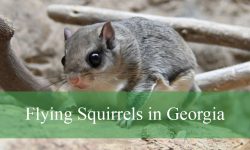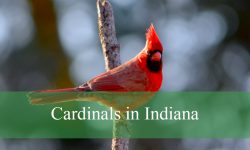Snakes in Arkansas are a diverse and fascinating group of reptiles, reflecting the state’s varied habitats and climates. From the woodlands to the prairies, snakes in Arkansas play crucial roles in their ecosystems, managing pest populations and serving as prey for larger predators.
This article will explore 50 common snake species found in Arkansas, including several venomous ones.
Venomous Snakes in Arkansas
Eastern Copperhead
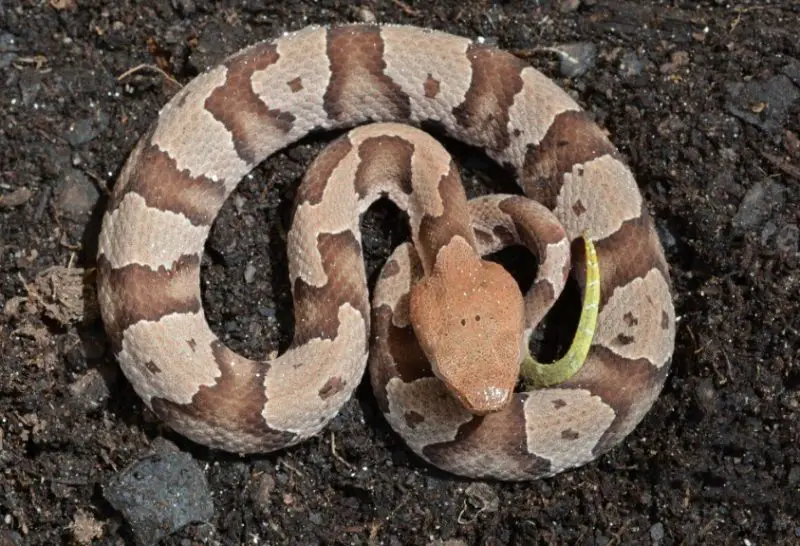
The Eastern Copperhead (Agkistrodon contortrix) is a venomous snake found in Arkansas. It has a distinctive appearance with shades of brown and dark brown hourglass-shaped marks along its body. Commonly found in woodlands and nearby areas, this snake is an ambush predator that remains stationary for long periods.
While its bite is rarely fatal, symptoms include nausea, pain, and potential tissue damage. Antivenom can be administered, though allergic reactions may occur in some individuals.
Timber Rattlesnake
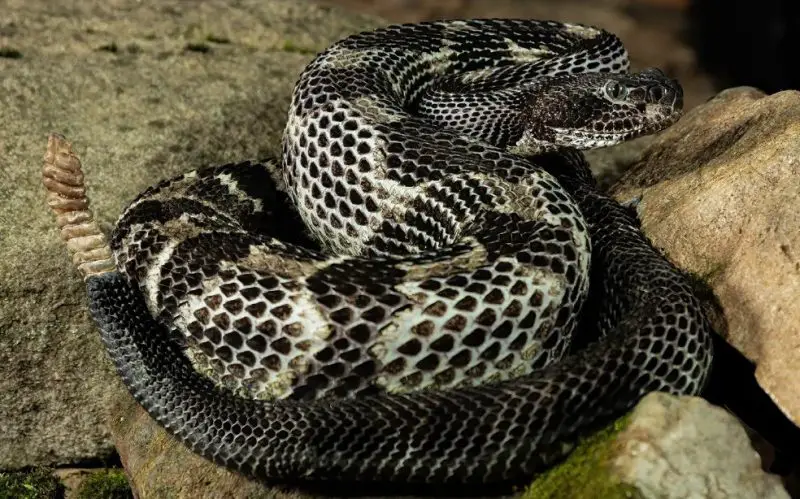
The Timber Rattlesnake (Crotalus horridus) is one of the most venomous snakes in Arkansas. Known for its aggressive behavior when threatened, it can even prey on juvenile Rattlesnakes and Garter Snakes. A bite from this species requires immediate medical attention and antivenin.
Early signs include black, swollen skin at the bite site, with potential permanent damage to the skin’s texture. The snake is often feared for its powerful venom and defensive nature when roughly handled.
Pygmy Rattlesnake
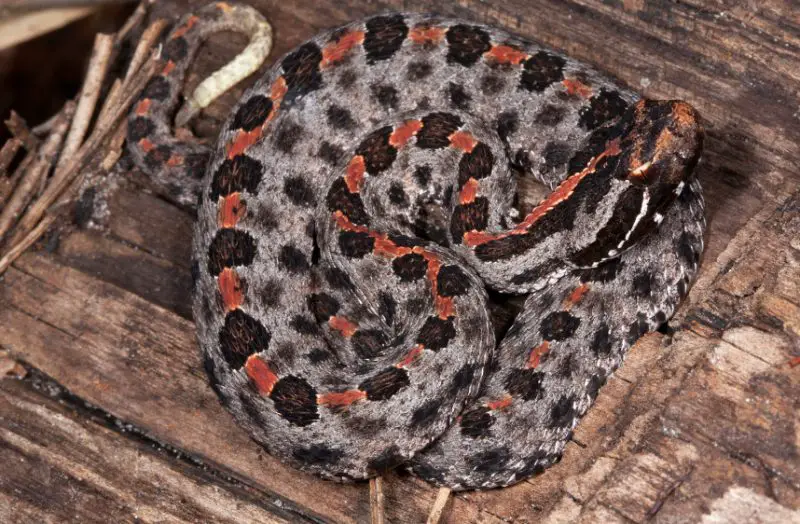
The Pygmy Rattlesnake (Sistrurus miliarius) is a highly venomous species found in woods, dunes, marshes, and near permanent water sources. It is identified by its rattle at the tip of its tail and gray-black body. Primarily feeding on frogs, birds, and small mammals, this snake is an ambush predator.
Its venomous bite is extremely painful, requiring medical attention and potentially hospitalization. The cytotoxic venom can cause hemorrhagic reactions, making it one of the most dangerous snakes in the United States.
Northern Cottonmouth

The Northern Cottonmouth (Agkistrodon piscivorus), also known as the Water Moccasin, is one of the most venomous water snakes in the US, including Arkansas. This snake is typically brown, gray, or black and inhabits swamps, ponds, and wetlands.
It can also live on dry land, but always near water. The Cottonmouth is known for its cytotoxic venom, which can destroy tissue, though bites in Arkansas are rare. It primarily preys on fish, rotating its head to swallow prey more efficiently.
Western Diamond-backed Rattlesnake
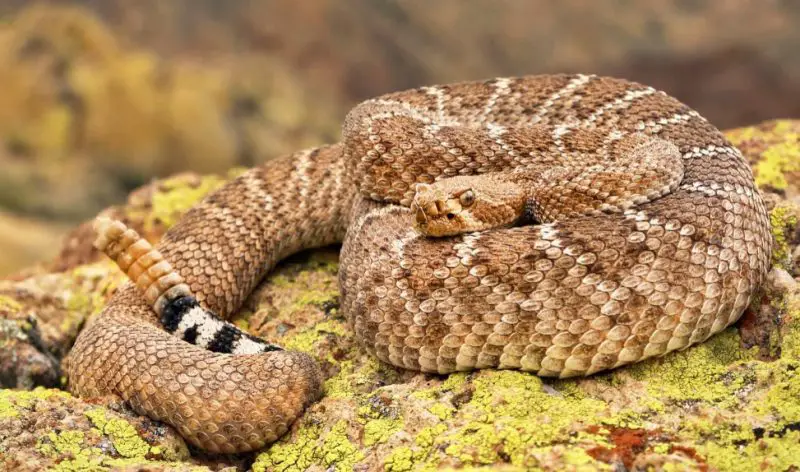
The Western Diamond-backed Rattlesnake (Crotalus atrox) inhabits the western and central regions of Arkansas and is sometimes found in homes. Its population has declined due to human activity and fear of this dangerous snake.
However, it is highly adaptive and can survive up to two years without food. Early signs of a bite include numbness, muscle weakness, and difficulty breathing, followed by vomiting and blurred vision. Its venom can cause excessive bleeding, or hemorrhagia, making medical attention essential.
Texas Coralsnake
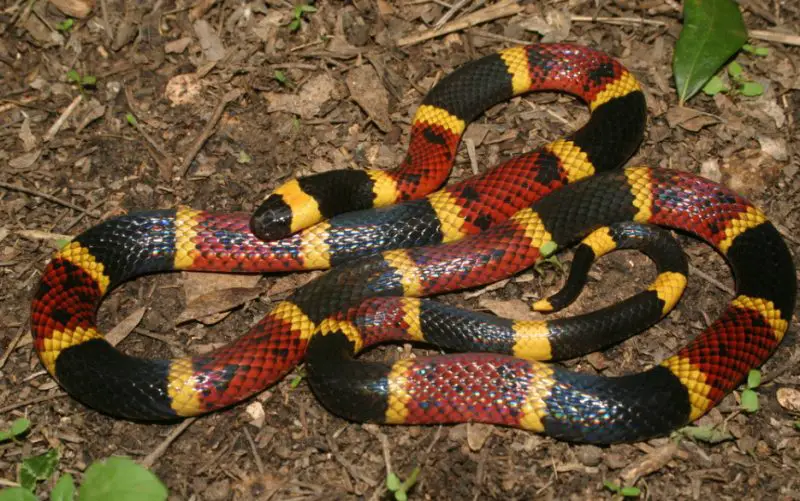
The Texas Coralsnake (Micrurus tener) is a slender venomous snake found in small numbers in Arkansas. With dark red or brown coloring, it has neurotoxic venom, and symptoms of its bite, such as headaches, breathing difficulties, and partial paralysis, may be delayed by several hours. Bites usually occur when the snake is surprised or stepped on.
A nocturnal predator, the Texas Coralsnake hides under leaf litter and primarily feeds on other snakes, including juveniles and occasionally its own offspring in acts of cannibalism.
Non-venomous Snakes in Arkansas
North American Racer
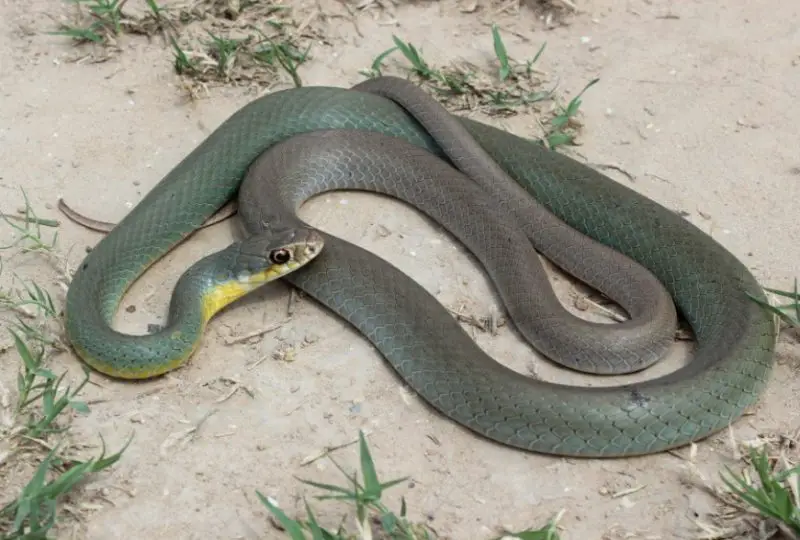
The North American Racer (Coluber constrictor) is a highly active snake found in Arkansas. Known for its daytime foraging, it may climb to search for bird nests and eggs, and it feeds on rodents and small mammals. Juvenile Racers, which are smaller and up to 10 inches long, primarily consume insects.
Both adults and juveniles are commonly seen in open grasslands. This species is not docile and uses various defense mechanisms, including emitting a foul odor and delivering multiple bites when threatened.
Rough Greensnake
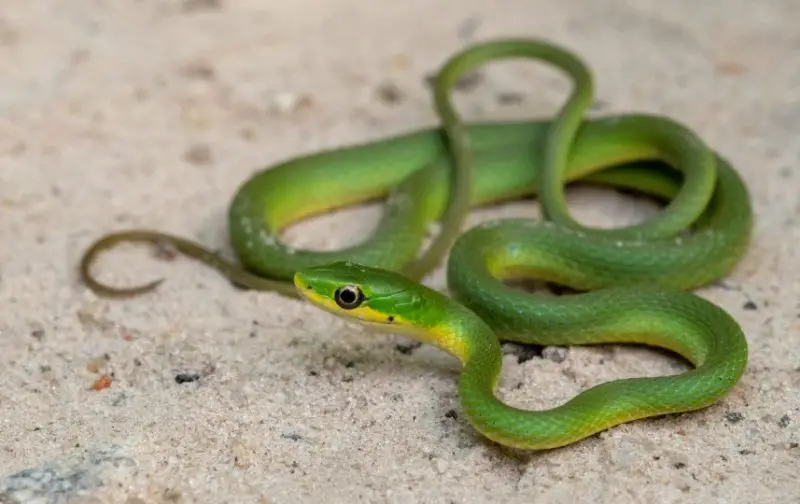
The Rough Greensnake (Opheodrys aestivus) is one of the smallest and most agile snakes in Arkansas, known for its bright green dorsal color and yellow or pale underside. This slender species can climb trees, swim, and is often found on dense vegetation, on the ground, or in trees during the day.
It primarily feeds on arthropods and travels long distances in search of food. Preferring dense vegetation for refuge from predators, the Rough Greensnake lacks significant defense mechanisms and faces habitat loss due to industrialization.
Banded Watersnake
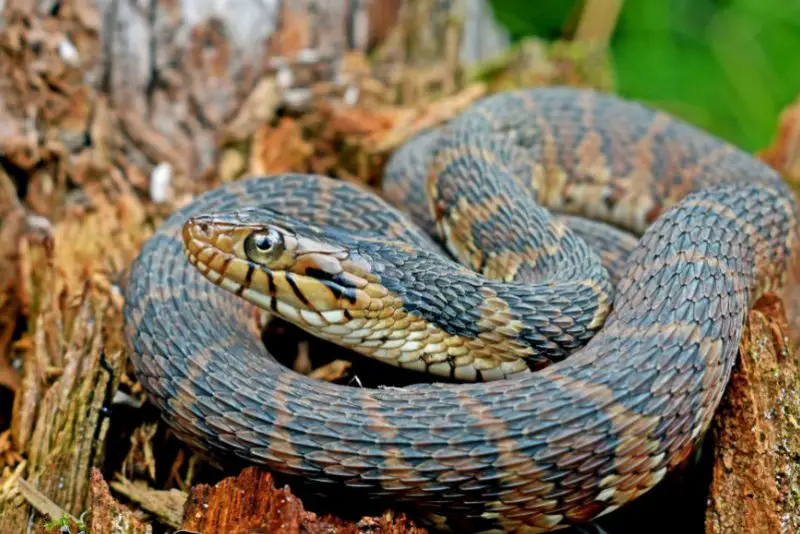
The Banded Watersnake (Nerodia fasciata) is a common aquatic species in Arkansas, found around ponds, lakes, streams, and marshes. This non-venomous snake is typically dark gray, brown, or black with contrasting dark crossbands.
It often gives birth to clusters of up to 20 juveniles near water. Banded Watersnakes are frequently seen in vegetated water areas and climb into vegetation to access a variety of prey. Frogs are a common food source in their humid habitats.
Western Ribbon Snake
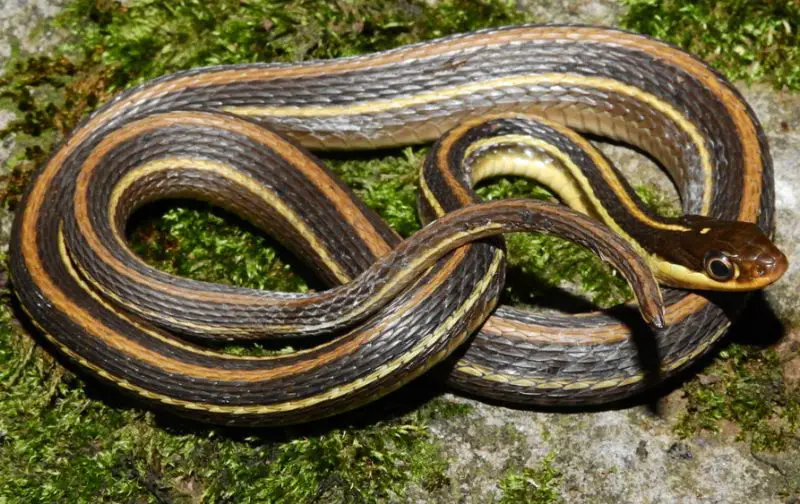
The Western Ribbon Snake (Thamnophis proximus) is a small, black snake with distinctive yellow and red stripes, commonly found near water. Though it primarily spends its time on land, it can swim and uses water to escape threats.
This species thrives in humid, vegetated areas around water, where it primarily feeds on frogs, often using mimic strikes to flush them from hiding. Western Ribbon Snakes reach sexual maturity before their first year and have a short lifespan, with many living less than 3 years.
Diamondback Watersnake
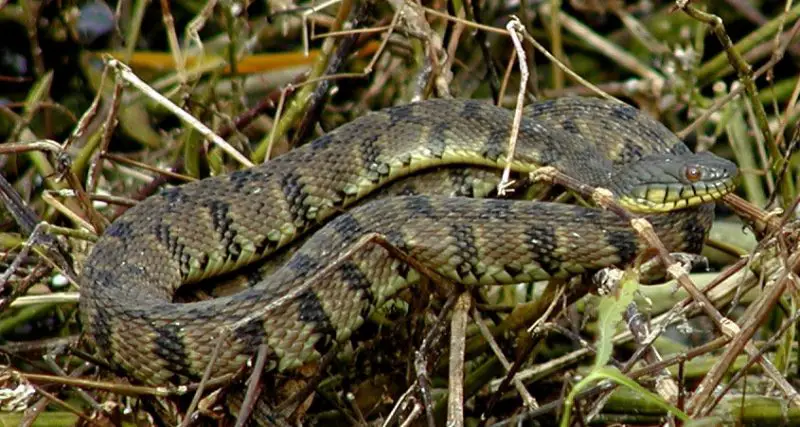
Diamondback Watersnakes (Nerodia rhombifer) are known for their dark-colored bodies and heavily keeled scales. Often found near water, they share their habitat with species like the Western Ribbon Snake. The color of Diamondback Watersnakes varies by location, with many displaying dark green bodies and black crossbands, while olive-green morphs are also common.
They have a distinctive yellow ventral coloring. By late summer, female Diamondback Watersnakes give birth to live young, with newborns measuring between 8 and 10 inches.
Western Worm Snake
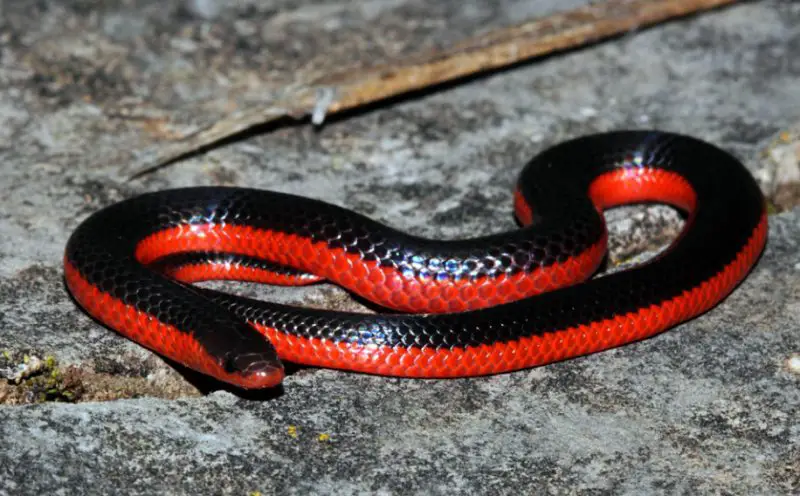
The Western Worm Snake (Carphophis vermis) inhabits northwestern Arkansas, characterized by its black dorsal color and pink to red ventral color. This small, non-venomous snake spends most of its life hidden in the ground or under leaves, remaining highly secretive and mating away from predators.
Its diet consists mainly of earthworms. To defend itself, the Western Worm Snake can release a foul smell and may use the tip of its tail to push away threats. It rarely bites humans, preferring to flee and hide in foliage.
Red-bellied Snake
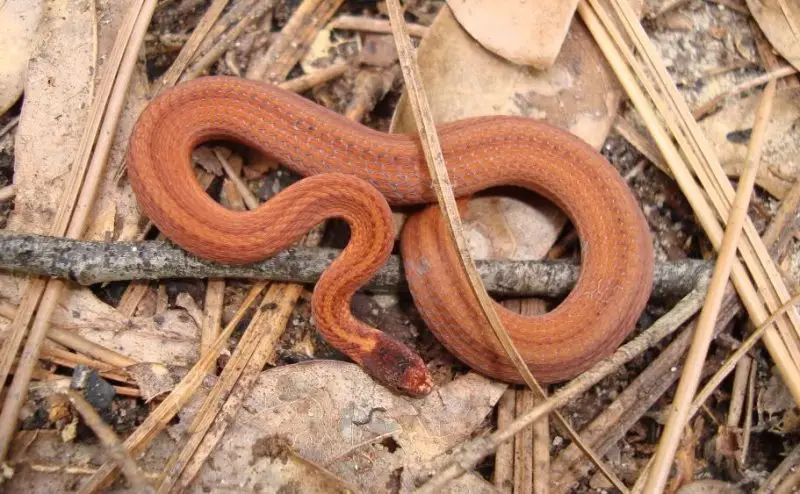
The Red-bellied Snake (Storeria occipitomaculata) is a small, secretive species typically measuring 6 to 8 inches, though it can reach up to 10 inches. Named for its vivid red ventral coloring, this snake has a dark brown or dark gray dorsal color that lightens to a bright brown in juveniles. It also features a distinctive head color.
Although generally associated with coastal plains, the Red-bellied Snake is found near bodies of water in Arkansas. Its small size and elusive nature make it a rarely seen species.
Prairie Kingsnake
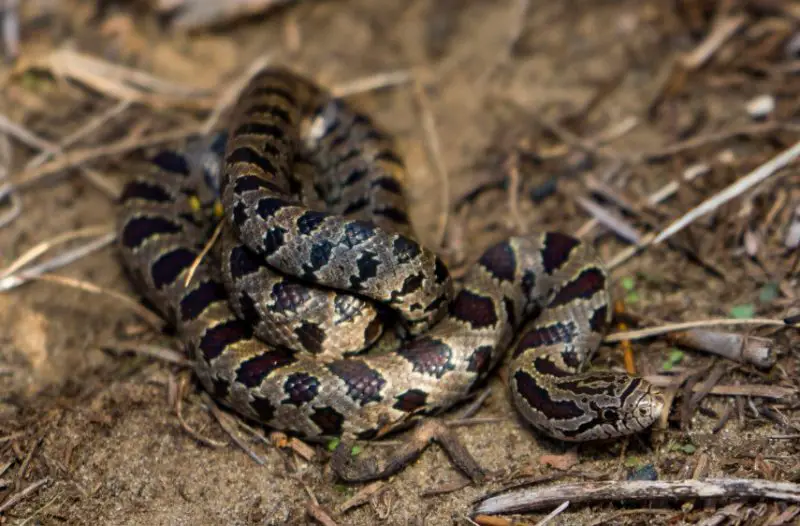
Prairie Kingsnakes (Lampropeltis calligaster) inhabit open fields, prairies, and grasslands, and can also be found around cultivated fields due to their rodent prey. This secretive species, which may also feed on frogs, lizards, and juvenile snakes, is recognized by its brown body with dark brown blotches, though some individuals may appear nearly uniform in color.
Prairie Kingsnakes are among the larger snakes in Arkansas, with some reaching up to 40 inches in length. Their elusive nature makes them less commonly seen despite their size.
Eastern Hognose Snake
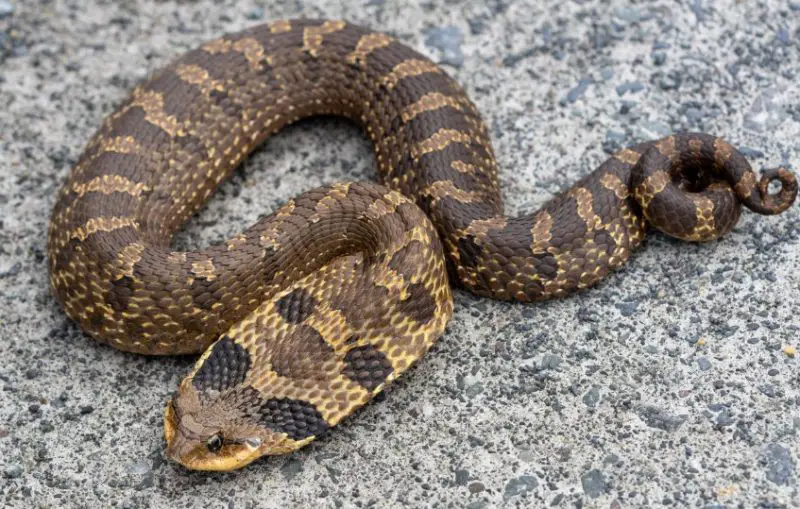
Eastern Hognose Snakes (Heterodon platirhinos), also known as the Black Adder, are common throughout the state and come in various colors, including black, brown, and green. Despite their defensive behavior, which involves raising and flattening their heads like a cobra, they are non-venomous.
These snakes play a crucial role as predators of frogs and salamanders, producing hormones to neutralize their prey’s toxins. In mid-summer, Eastern Hognose Snake eggs can be found in secluded vegetation, hatching within two months.
Rough Earthsnake
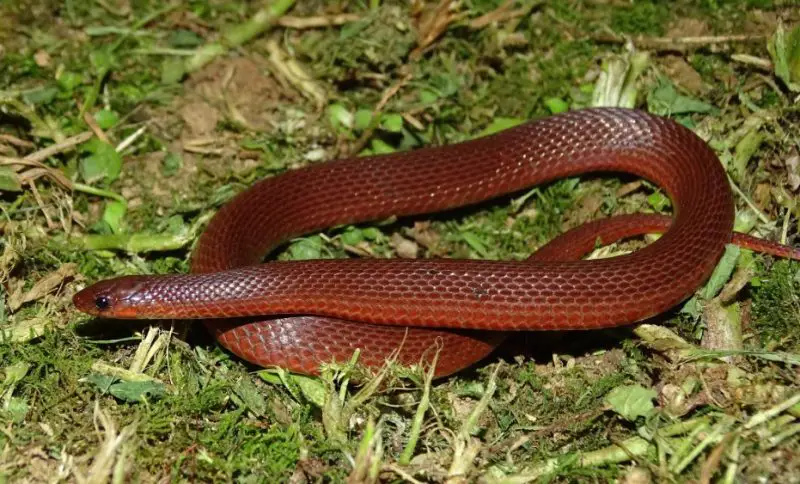
Rough Earthsnakes (Haldea striatula) are fossorial snakes in Arkansas, averaging 6-7 inches in length and identifiable by their dark gray color. Active during the summer, females give birth to live young, typically around five per litter.
These snakes are known for their secretive nature, often hiding or escaping when encountered by humans. They rarely bite and use a foul-smelling musk as a defense mechanism. Occasionally found in gardens, Rough Earthsnakes are generally docile and can be handled with minimal concern.
Smooth Earthsnake
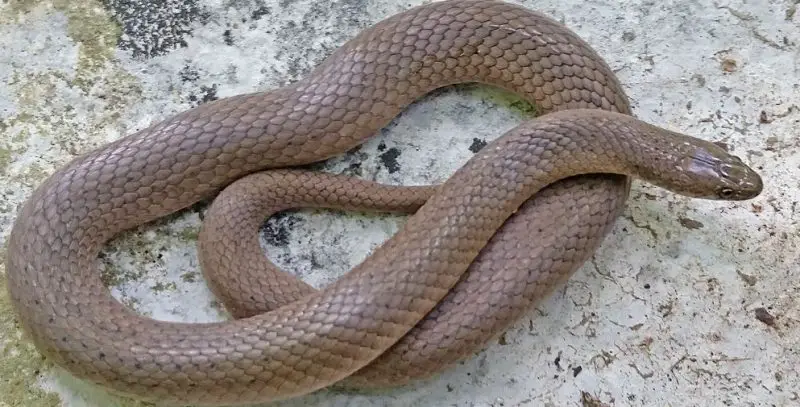
Smooth Earthsnakes (Virginia valeriae) are native to Arkansas and the Eastern US, characterized by their dark gray or brown-gray color with a darker head. They grow up to 8.8 inches and have small teeth used for feeding on spiders, caterpillars, and other insects but do not bite humans.
As fossorial snakes, they lead secretive, underground lives similar to Rough Earthsnakes. Juvenile Smooth Earthsnakes are often mistaken for worms due to their small size of just 2 to 3 inches at birth.
Coachwhip
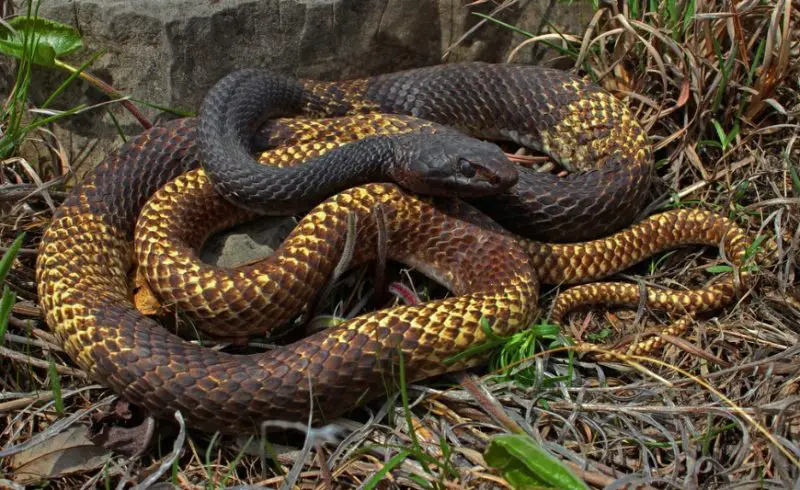
Coachwhip snakes (Masticophis flagellum) exhibit a range of colors including green, brown, and black, often with a darker head. Among the largest snakes in Arkansas, some Coachwhips can grow up to 90 inches. They favor sandy terrains, fields, crops, and prairies. While non-venomous, their bites are highly painful.
Coachwhips use head movements to tear prey faster. They are typically solitary, except during their mating period from mid-summer to August, when males flick their tongues to assert dominance. Juveniles mature quickly and also live solitary lives, with a lifespan of up to 3 years.
Western Milksnake
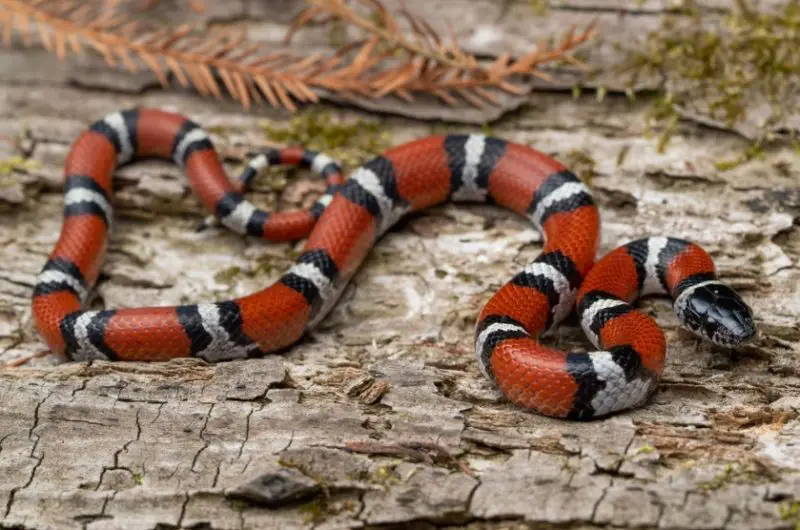
Western Milksnakes (Lampropeltis gentilis) are vibrant and colorful, with red, white, black, and brown-red patterns, often featuring white or yellow crossbands. Found in fields, woodlands, and crops, they primarily feed on insects and slugs.
Though they lead secretive lives and prefer to flee from humans, Milksnakes are generally docile when handled and rarely bite. They may rattle their tails as a warning before striking. Their small teeth are not harmful to people. Milksnakes are also featured in local folklore, including myths about them drinking milk from cows.
Mudsnake
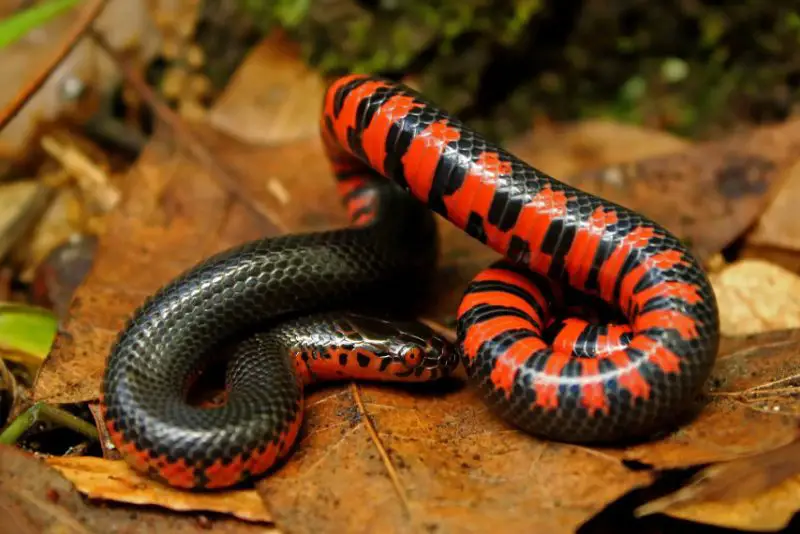
Mudsnakes (Farancia abacura) are black snakes with distinctive red ventral coloring, found in Arkansas. Though rarely encountered, they predominantly live in aquatic environments such as ponds, emerging on dry land mainly to mate, lay eggs, or overwinter.
Despite their robust bodies and aquatic habitat, Mudsnakes are non-venomous. They use the tip of their tail to investigate potential threats and can deliver a painful bite if provoked. Mudsnakes have large upper teeth adapted for feeding on slippery salamanders.
Western Ratsnake
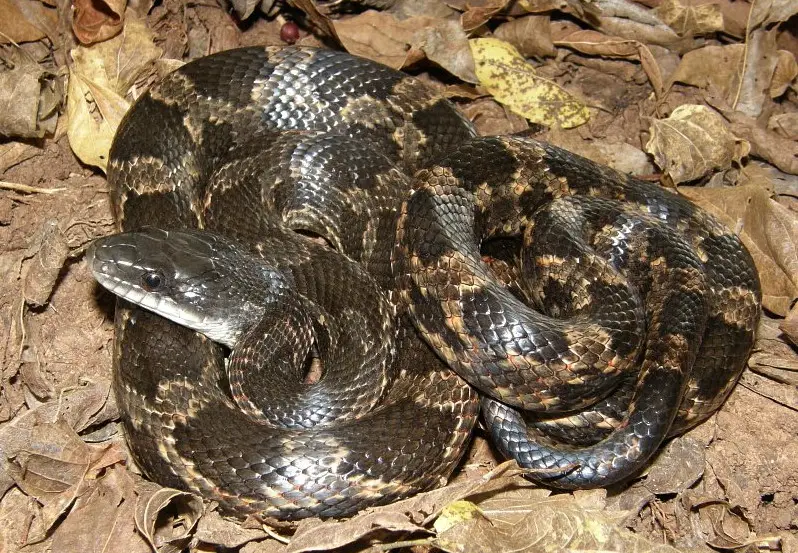
The Western Ratsnake (Pantherophis obsoletus) is a non-venomous species found in Arkansas, primarily black in color and highly adaptable to various habitats, including oak woodlands, rocky terrains, and dry areas.
Active during the summer, it can often be seen basking in the sun, while in winter, it hides in dens, sometimes alongside the venomous Timber Rattlesnake, leading to confusion about its venomous nature. Agile and skilled at both climbing and swimming, the Western Ratsnake relies on constriction to hunt a variety of prey.
Ring-necked Snake
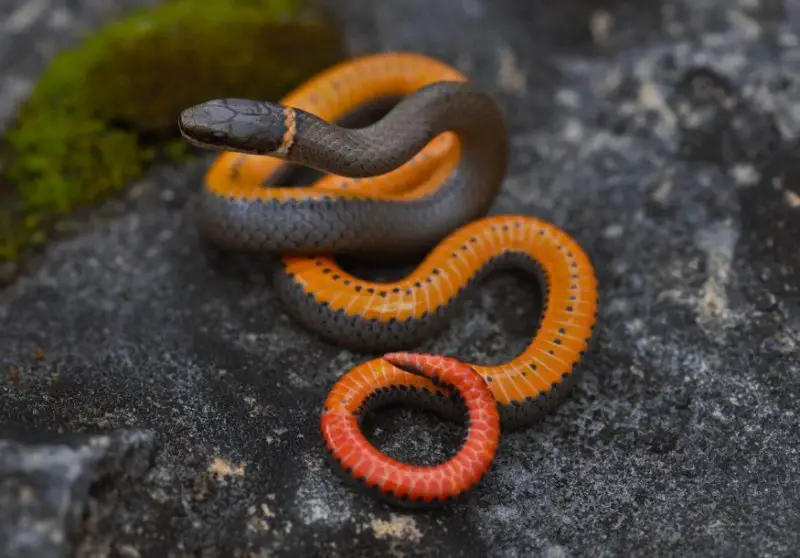
The Ring-necked Snake (Diadophis punctatus) is one of the smallest snakes in Arkansas, easily identified by its dark gray body and a distinctive cream to white ring around its head. This nocturnal species is commonly found in woodlands, hiding under leaves or in ground dens.
It has an opportunistic diet, feeding primarily on salamanders and earthworms. Though a constrictor, it also uses mildly venomous saliva to subdue its prey. Despite its venom, the snake poses no threat to humans and rarely bites, even when handled.
Speckled Kingsnake
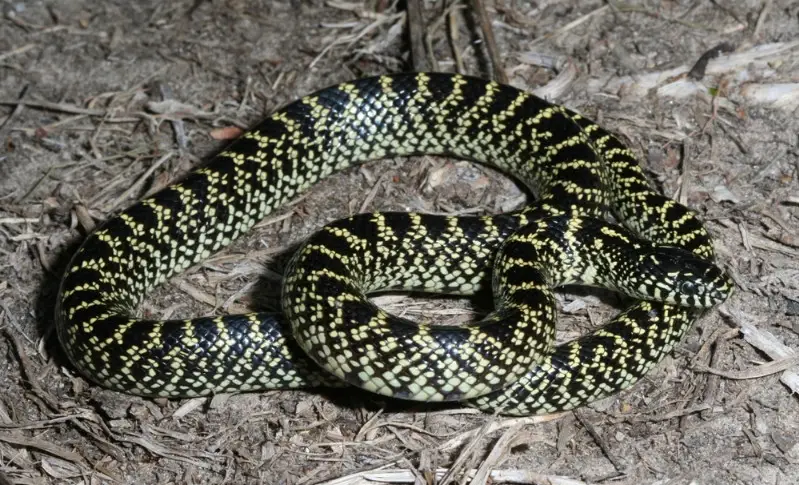
The Speckled Kingsnake (Lampropeltis holbrooki) is a non-venomous snake in Arkansas, recognized by its black-speckled body. It thrives in various habitats but is often found near water sources, especially in swamps. An omnivorous predator, it feeds on small mammals, birds, rodents, and lizards.
Though primarily seen around wetlands, it also ventures onto dry land. The Speckled Kingsnake plays an important role in controlling rodent populations, making it a beneficial species in its ecosystem.
Dekay’s Brownsnake
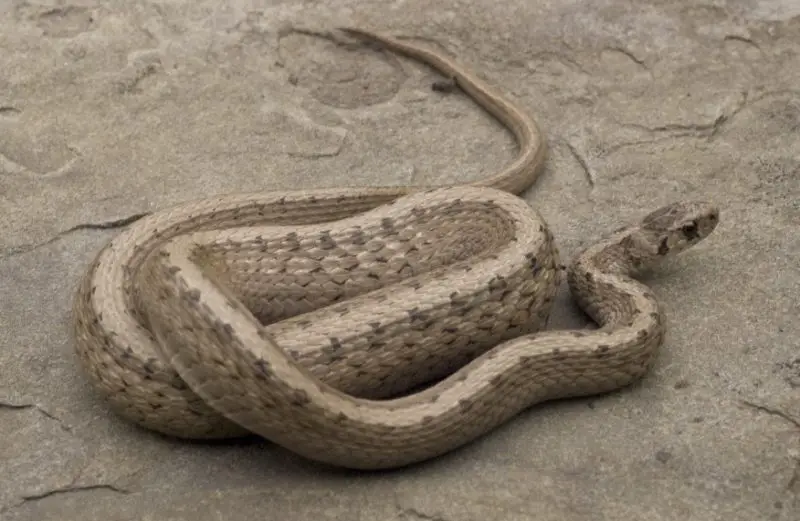
Dekay’s Brownsnake (Storeria dekayi) is a small, non-venomous snake commonly found in Arkansas, recognized for its brown color with light and dark variations. Often mistaken for venomous species, it primarily feeds on slugs and snails, with occasional frogs and toads in some regions.
Growing up to 15 inches, this snake has a thick, robust body and a keeled appearance. Active in early spring after hibernation, Dekay’s Brownsnakes are commonly seen in aquatic habitats, though they adapt to various environments across the state.
Common Garter Snake
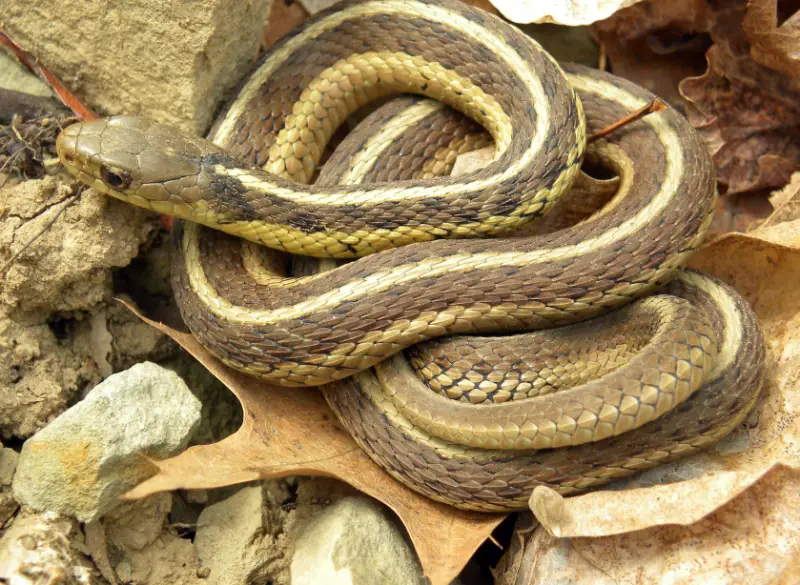
The Common Garter Snake (Thamnophis sirtalis) inhabits grasslands and forests and is often found on roads, where it frequently falls victim to traffic. This species plays a vital role in its ecosystem, preying on small mammals while also serving as food for larger predators like raccoons.
Recognizable by its striped body, the Common Garter Snake uses venomous saliva to subdue prey such as frogs and toads, but this saliva poses no danger to humans. These snakes can grow up to 4 feet long and can even consume poisonous newts and toads.
Common Watersnake
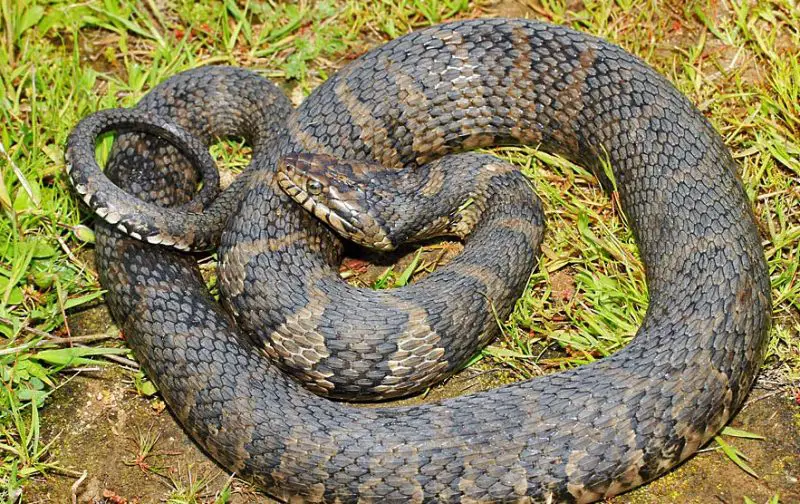
The Common Watersnake (Nerodia sipedon) is a large, non-venomous snake often found in Arkansas near ponds, streams, rivers, and marshes. Its dark coloration can appear black from above, and its size varies with the water source, with juveniles preferring smaller, predator-free streams and ponds.
Known for its aggressive nature, the Common Watersnake bites multiple times when threatened, making it wise to avoid handling. These snakes are frequently seen basking on rocks near water but are best left undisturbed due to their defensive behavior.
Plain-bellied Watersnake
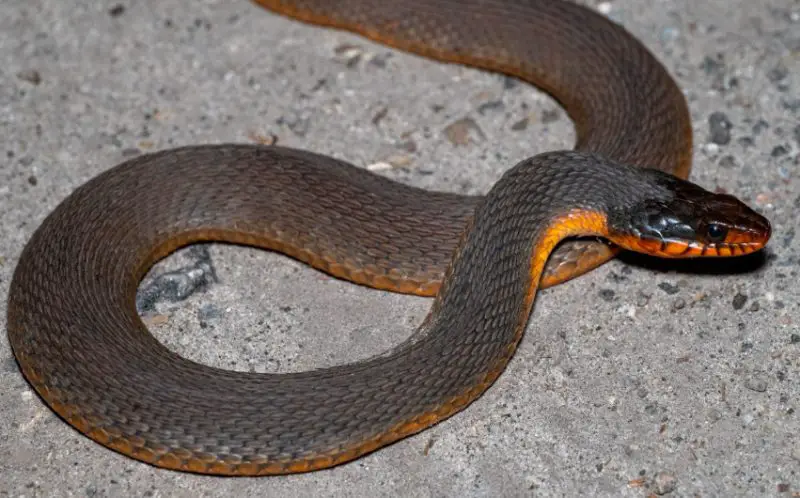
The Plain-bellied Watersnake (Nerodia erythrogaster) is a semi-aquatic snake often found alongside Common Watersnakes in Arkansas. Named for its cream or yellow underbelly, this species prefers aquatic environments and feeds primarily on crayfish and fish, with frogs being a less favored prey.
It can adapt its diet to include dead animals if necessary. Plain-bellied Watersnakes are most active and visible out of the water during early summer when they mate. Females give birth to live young towards the end of the summer.
Western Ground Snake
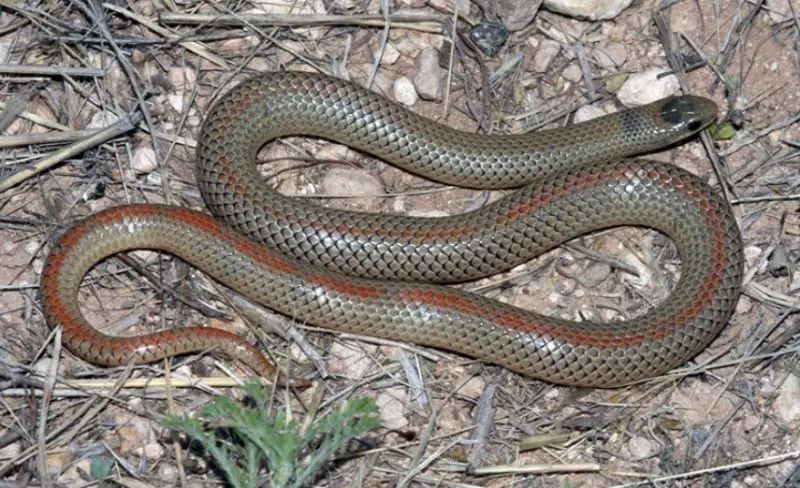
Western Ground Snakes (Sonora semiannulata) are known for their vibrant orange and red colors with distinctive black bands. These slender snakes, with their smooth scales, thrive in loose soil, under rocks and logs, and in leaf litter.
Their diet primarily consists of small arthropods, with centipedes being a preferred prey. During summer, Western Ground Snakes are particularly active as females search for suitable nesting sites to lay their eggs.
Gray Ratsnake
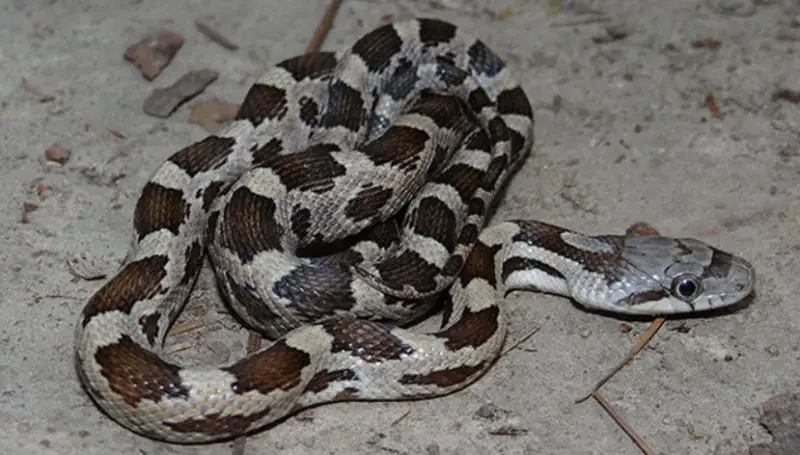
Gray Ratsnakes (Pantherophis spiloides), often found in habitats with rats like crops, farms, barns, and garages, are predominantly black. These large snakes, measuring between 3 to 6 feet, use their substantial size for constricting prey.
In the summer, females may be observed around woodlands as they lay clutches of at least 5 eggs after mating. Their adaptation to various environments makes them versatile hunters in their range.
Pine Snake
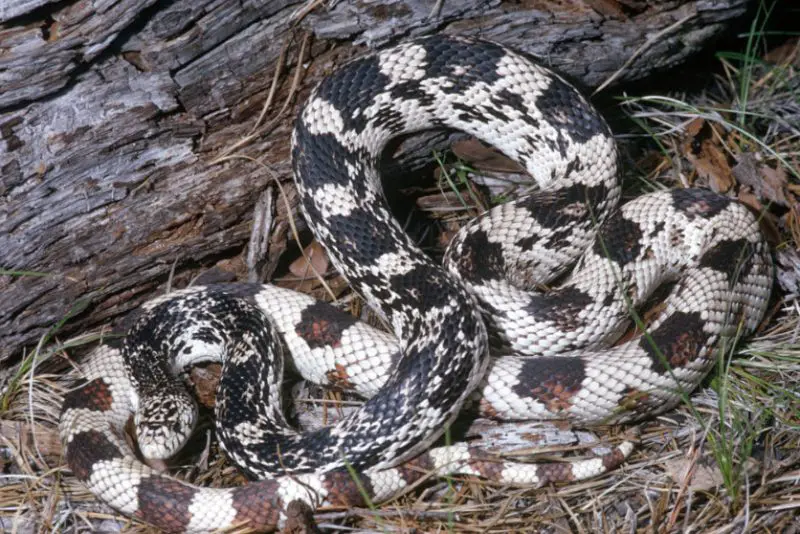
Pine Snakes (Pituophis melanoleucus), also known as Bullsnakes, thrive in flatwoods, loose soils, and well-drained soils. They are among the rare large snakes in the state, with some individuals reaching up to 90 inches in length.
Their substantial size enables them to prey on animals like foxes. Pine Snakes are typically light gray with black blotches, though they can also exhibit a morph with red-brown patterns.
Flat-headed Snake
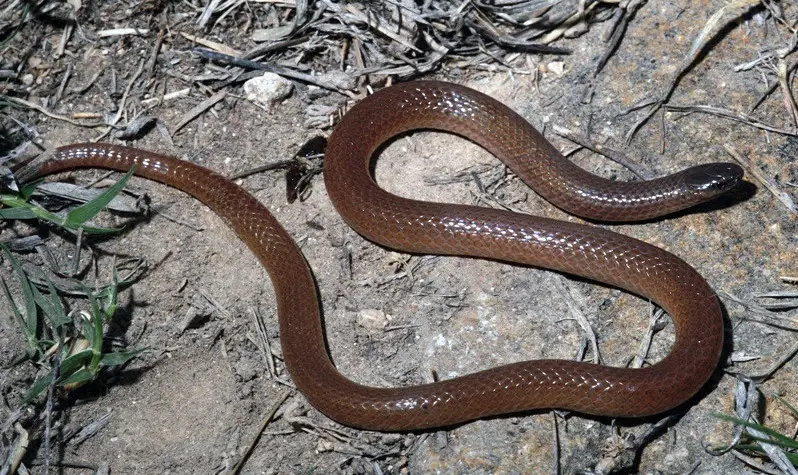
The Flat-headed Snake (Tantilla gracilis) is a rare species in Arkansas, distinguished by its black body with red ventral coloring and brown hues in juveniles. Among the smallest snakes in the state, they typically measure just over 8 inches in length. Female Flat-headed Snakes lay a very limited number of eggs, ranging from 1 to 4 per mating season.
These snakes are often found in gardens, especially around rocks where they bask in the sun for warmth. Their small size and secretive nature make them infrequently seen.
Great Plains Ratsnake
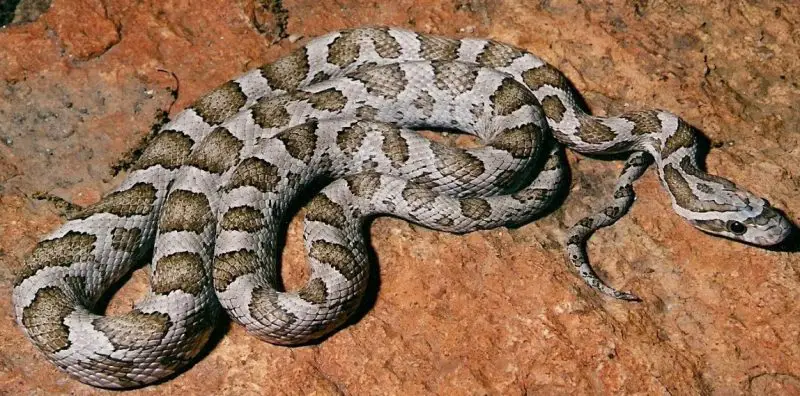
Great Plains Ratsnakes (Pantherophis emoryi), also known as Eastern Spotted Snakes, are recognized by their large brown blotches. They inhabit moderate to high-altitude and mountainous terrains, and have adapted to arid climates. Their diet includes rodents, small birds, and occasionally juvenile snakes of other species.
This large species can grow up to 5 feet and lay over 20 eggs at a time. Although not aggressive, Great Plains Ratsnakes may bite, typically less painfully than other snakes, and they often shake their tail as a warning before striking.
Graham’s Crayfish Snake
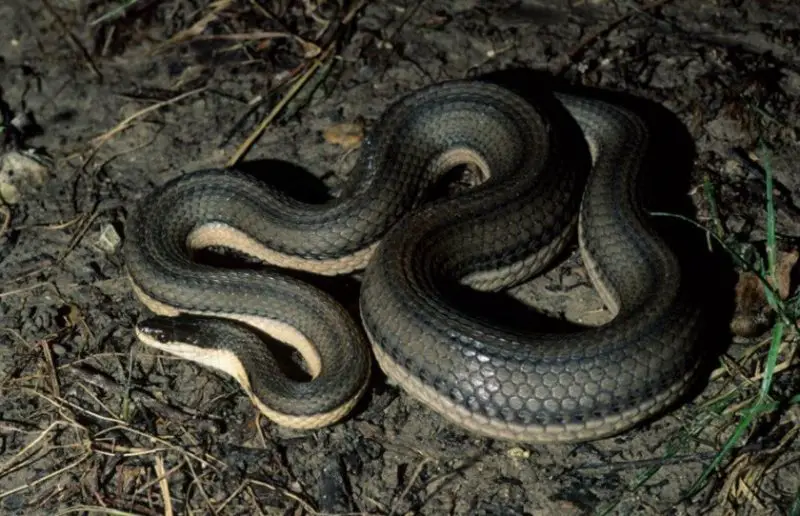
Graham’s Crayfish Snakes (Regina grahamii) are nocturnal and rarely seen by humans. Growing up to 28 inches, they have gray-to-brown coloring and are primarily aquatic, spending most nights hunting for fresh crayfish.
Occasionally, they may consume small fish. Due to their specialized diet, these snakes cannot be bred in captivity as they refuse to eat in enclosed spaces. When handled, they release a foul-smelling musk as a defense mechanism against predators.
Eastern Milksnake
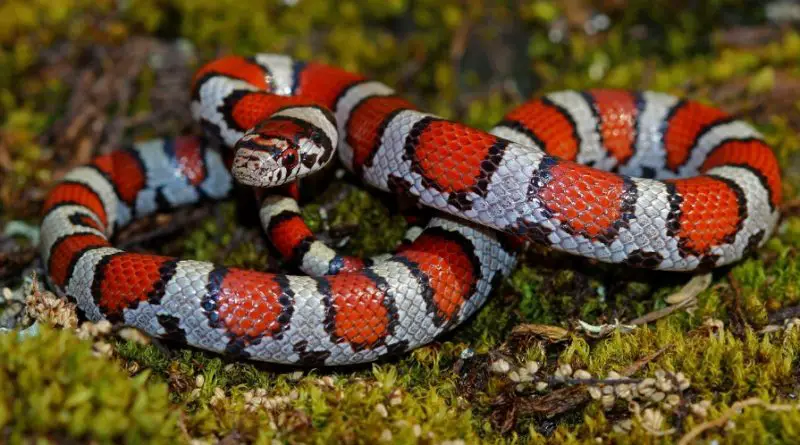
Eastern Milksnakes (Lampropeltis triangulum) are popular in captivity due to their various morphs, including green, brown, red, and red-brown. They can grow up to 52 inches and are commonly found in crops, fields, woodlands, and suburban areas where rodents are present.
Known for their docile nature, bites from Eastern Milksnakes are rare but may occur if the snake is stepped on or handled roughly. They are also called the Cow Sucker Snake, stemming from a myth about them drinking milk directly from cows.
Mississippi Green Watersnake
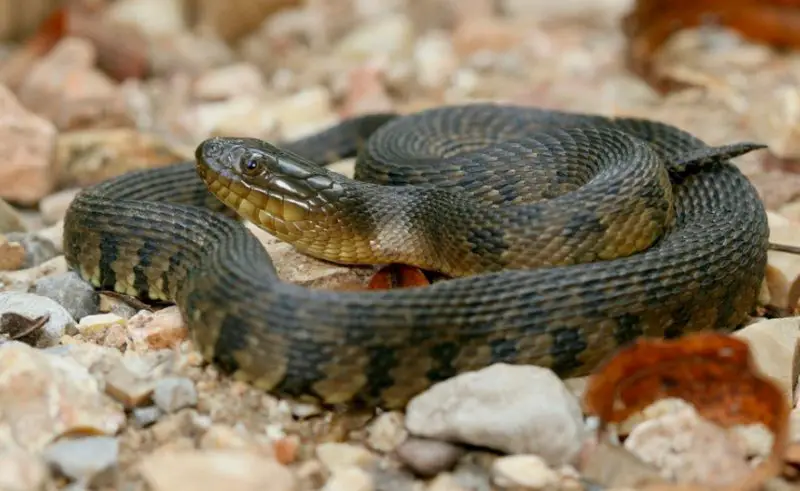
Mississippi Green Watersnakes (Nerodia cyclopion) are among the rarer snakes in Arkansas, known for their amphibian diet, including fish and tadpoles. These aquatic snakes can grow over 40 inches but capture their prey alive rather than constricting it.
They are generally docile and prefer to release a musk-like odor rather than bite. To avoid encounters, it’s best to steer clear of swamps and dense vegetation near ponds and lakes. In late summer, females give birth to up to 34 live juveniles.
Scarletsnake
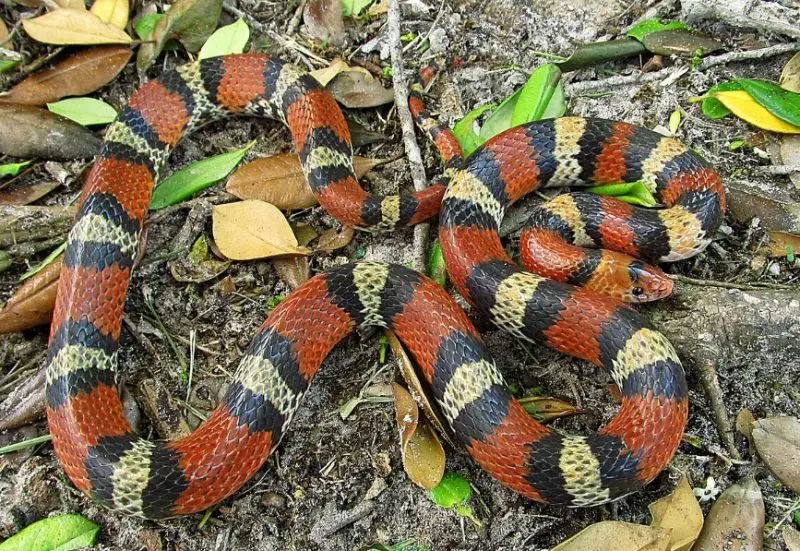
Scarletsnakes (Cemophora coccinea) are small to medium-sized snakes, growing up to 26 inches. They are easily recognizable by their red bodies adorned with black and white crossbands. This docile species prefers to flee rather than bite, which is rare. Scarletsnakes have a diverse diet, feeding on eggs, including those of other snake species, using their large back teeth.
Unfortunately, their populations are dwindling, partly due to road killings and their appeal in the pet industry. They are typically found in open sandy soils or areas with leaf litter, providing quick escape routes.
Great Plains Ground Snake
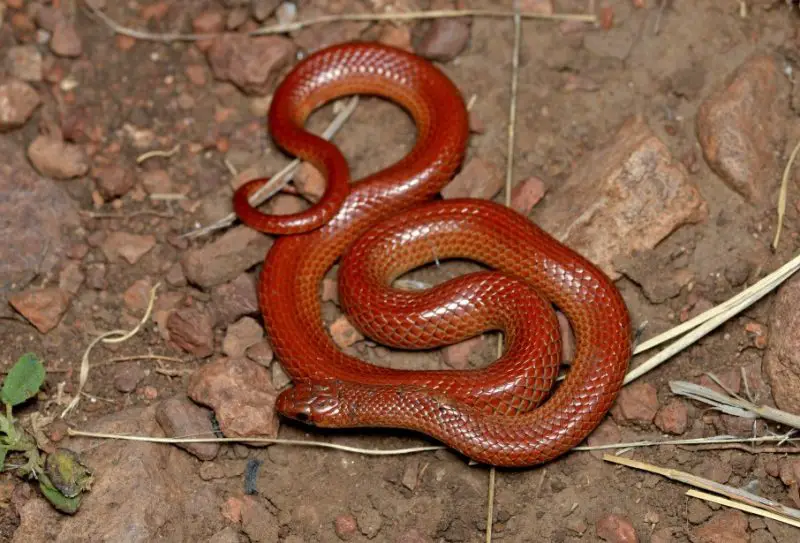
The Great Plains Ground Snake (Sonora episcopa) is a secretive species favoring loose soil. It displays a variety of colors, including orange, red, and brown, often with crossbands or uniform patterns, and may have black banding.
One of the smallest snakes in Arkansas, it typically grows up to 19 inches, though many are around 10 inches. This nocturnal, non-venomous snake feeds on soft scorpions, centipedes, and various insects. Its preference for hiding makes it rarely seen by humans.
Queensnake
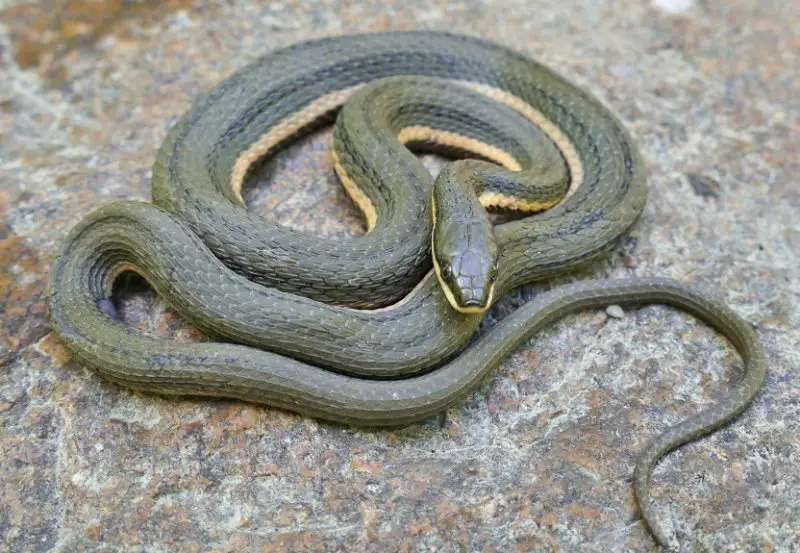
Queensnakes (Regina septemvittata) are native to Arkansas and are recognized by their dark olive green dorsal color and bright ventral color with dark stripes. Although the species remains stable across much of its range, it faces declining numbers in the Northern US due to water pollution.
Growing up to 24 inches, Queensnakes inhabit or are found near clean, rocky streams and rivers. Their diet primarily consists of young crayfish, but they also eat fish and frogs. They prefer warm water for swimming and feeding.
Glossy Swampsnake
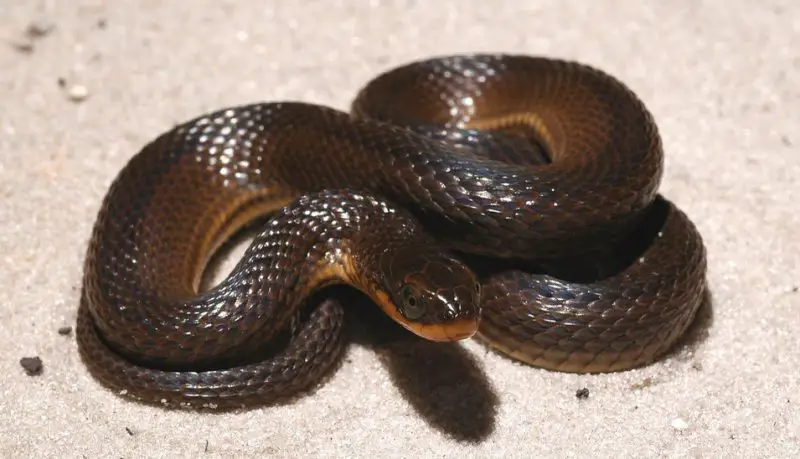
Glossy Swampsnakes (Liodytes rigida) are native to Arkansas and other Southeastern US regions. Characterized by their brown or green coloring with a yellow underbelly featuring dark stripes, these small aquatic snakes can grow up to 16 inches, with some reaching 31 inches.
Their diet mainly consists of crayfish. Glossy Swampsnakes are non-venomous and can be safely handled, often coiling around the handler’s hands. Despite their small size, they are an important part of their aquatic habitat.
Eastern Worm Snake
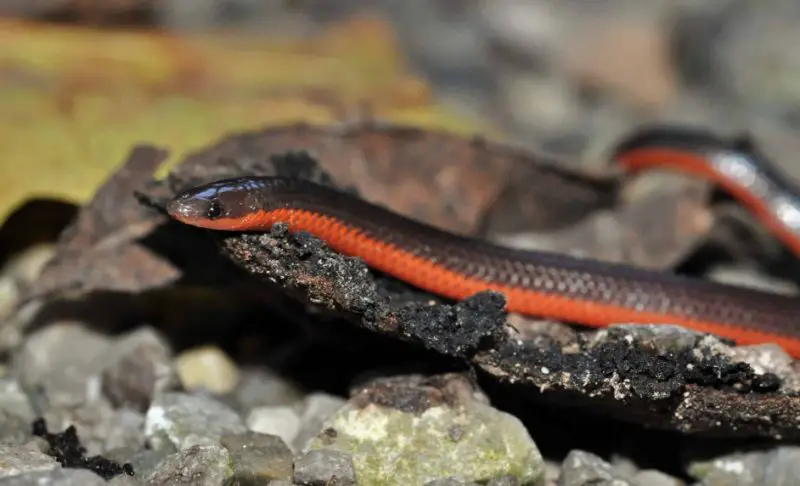
Eastern Worm Snakes (Carphophis amoenus) are elusive and primarily found in grasslands and adjacent woodlands in Arkansas. Known for their fossorial lifestyle, they have a brown or black body with a red ventral coloring.
These are some of the smallest snakes in the state, rarely exceeding 10 inches, with only the largest individuals reaching up to 13 inches. Eastern Worm Snakes live in high densities underground and feed opportunistically on slugs and bugs they encounter in their subterranean habitat.
Lined Snake
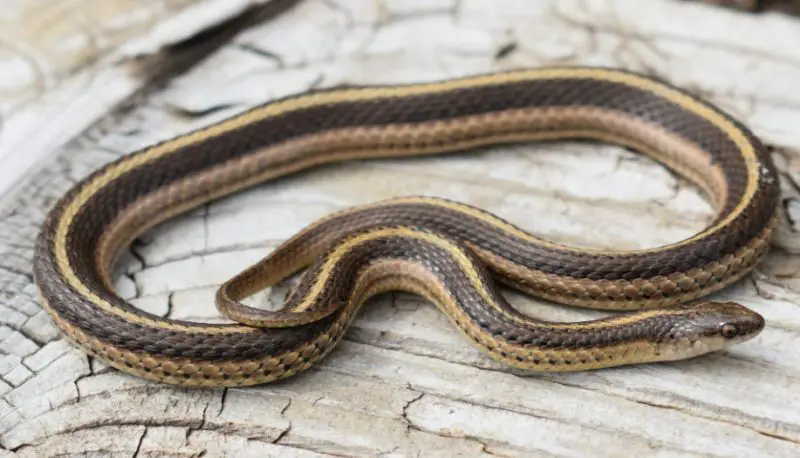
The Lined Snake (Tropidoclonion lineatum) is a semi-fossorial species found in Arkansas, spending time both underground and in leaf litter. Known for its secretive nature, the Lined Snake hides frequently. This non-venomous species is named for the stripes on its body and primarily feeds on earthworms.
With a short, thick body, it can grow to just over 20 inches. Lined Snakes are characterized by their gray, brown, or green bodies with distinctive yellow or black stripes.
Gopher Snake
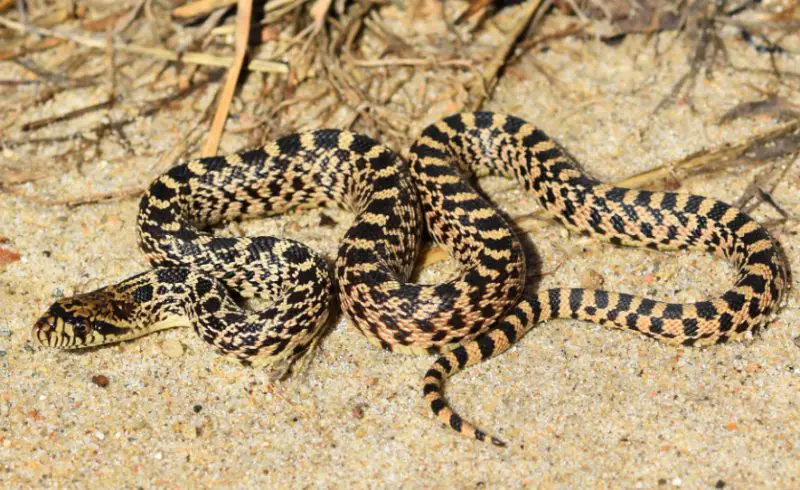
Gopher Snakes (Pituophis catenifer) are among the longest-living snakes in Arkansas, with lifespans of up to 15 years in the wild and even longer in captivity. They are characterized by their gray or light brown bodies with dark brown blotches.
Gopher Snakes inhabit a variety of environments, including crops, parks, woodlands, and gardens. They are both diurnal and nocturnal, using their opportunistic feeding habits to hunt for prey. While non-venomous, Gopher Snakes hiss and flatten their heads when threatened, rather than biting.


